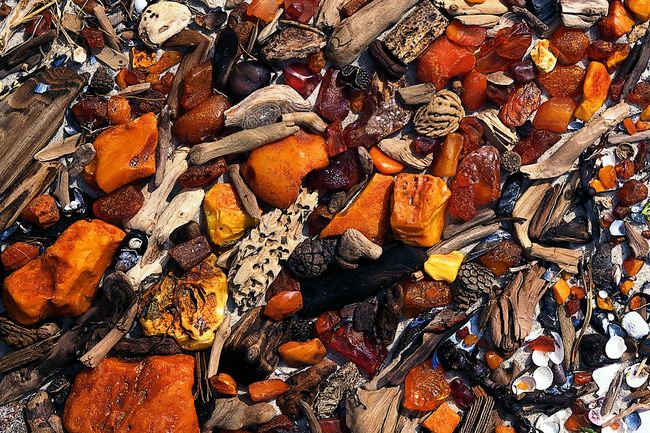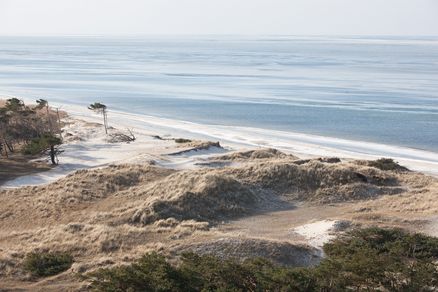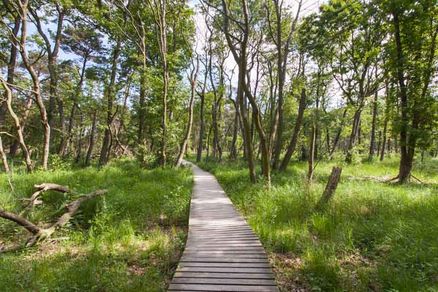Baltic Coast
The Baltic coast exhibition displays impressive large-format photos of the most prominent and interesting nature spots on the Baltic coast.
Hunting for fossil treasures is the motto of many Gotland visitors. Gotland is the second biggest island in the Baltic Sea. 410 – 440-million-year-old Silurian layers originate from former coral reefs and are abundant with fossils. In the last decades, researchers from the German Marine Museum frequently visited Gotland as well. A showcase in the “Baltic coast – landscapes and nature reserves around the Mare Balticum” exhibition displays the findings of these research and collection trips. It shows the typical Gotland limestone-boulder beach.
The “Baltic coast” exhibition features a special original: A limestone slab with unusually big fossils, cephalopods - Orthoceras limestone or “Öland stone” from Sweden. In spring 2003, true museum pieces of Öland stone were found in the Sandvig quarry on Öland. The one piece that was meant to be displayed at NATUREUM had to be lifted to the main building’s exhibition room on the first floor. The heavy slab of rather brittle limestone had been carefully split lengthwise before it could be moved to its destination.
After heavy landward storms and high tides, amber hunters go on their search for this valuable fossil. Their hunting grounds are the thick and entangled seaweed remains in the surf zone and along the shoreline. This technique will do for a handful of amber if you are lucky. The beaches along the Western Pomeranian Baltic coast are real treasure chests when it comes to collecting this fossilised tree resin. The yellow-brown amber pieces can become real gems when finished by a professional jeweller.


